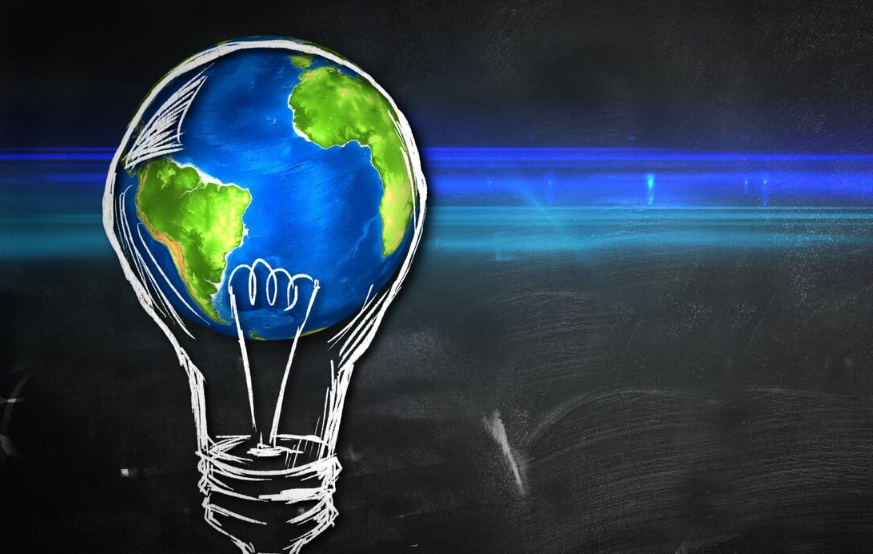Imagine walking through a forest and receiving an email from a tree. Sounds like a sci-fi fantasy, right? However, with the rise of plant tech, we are increasingly seeing the intersection of nature and technology in ways once thought impossible. Plants, often seen as passive organisms, are now being equipped with sensors, connected to the internet, and even capable of communicating in real time. Welcome to the world of plant tech, where trees and plants are no longer silent beings, but active participants in the digital age.
In this article, we will explore the emerging field of plant tech, its implications for environmental monitoring, agriculture, and the future of human-plant interactions.
What is Plant Tech?
Plant tech refers to the use of technology to interact with, monitor, and enhance the natural world of plants. This can range from simple sensor-based systems that measure soil moisture and temperature to more sophisticated networks that allow plants to “communicate” with humans and machines. It combines environmental science, technology, and biology to create systems that help us better understand and care for plant life.
At its core, plant tech is about using data-driven solutions to promote sustainability, improve agricultural practices, and foster a deeper connection between humans and the natural environment. The idea of trees sending emails or plants tweeting is not as outlandish as it seems—it’s a reality that is beginning to shape the way we think about our relationship with nature.
Key Technologies Behind Plant Tech:
- Sensors: Devices that monitor environmental conditions such as soil moisture, temperature, light, and humidity. These sensors collect real-time data that can be accessed remotely.
- IoT (Internet of Things): A network that connects devices to the internet, allowing them to communicate with each other and with users. In the case of plant tech, IoT-enabled sensors in plants and trees can send data and alerts via email or app notifications.
- Artificial Intelligence (AI): AI algorithms can analyze plant data, detect patterns, and even predict plant health or stress based on environmental factors.
- Biotechnology: Advanced bioengineering techniques that allow plants to interact with technology, such as genetically modified plants with built-in sensors.
The Communication Between Plants and Technology
While plants don’t have brains or nervous systems like animals, they do have sophisticated ways of interacting with their environment. For instance, plants can sense light, gravity, and even respond to physical damage by releasing chemical signals. In the context of plant tech, scientists have figured out how to translate these natural processes into data that we can interpret and act upon.
One of the most fascinating advancements in this area is the ability of plants to send signals through the use of electrochemical sensors. These sensors detect the electrical impulses generated by a plant’s cells in response to environmental changes. When a plant experiences stress, such as from drought or disease, it sends out electrical signals that can be monitored and transmitted to a digital system.
Examples of Plant Communication:
- “Talking” Plants: Using sensors to monitor plant stress, some systems can send real-time alerts via email or mobile app, notifying caretakers when a plant is in distress. For instance, a plant that has too little water might “send” a message, warning the owner of a potential issue.
- Tree Networks: In some experimental settings, trees have been outfitted with sensors that allow them to communicate with one another. This network, known as the “Wood Wide Web,” enables trees to exchange nutrients and information via underground fungal networks. While not a direct communication between trees and humans, this fascinating process has inspired research into plant-to-plant and plant-to-human communication.
The Role of Plant Tech in Environmental Monitoring
Plant tech is transforming how we monitor and manage our natural resources. By installing sensors in forests, gardens, and agricultural fields, scientists and farmers can gain a much deeper understanding of plant health and environmental conditions.
Forest Monitoring:
- Smart Forests: Trees equipped with IoT sensors can help scientists track the health of entire forests. These sensors can measure variables such as soil pH, moisture levels, and tree growth rates. The data collected is sent to researchers or environmental agencies via cloud platforms, helping them detect early signs of forest stress due to climate change, disease, or deforestation.
- Wildfire Detection: Some systems are even being developed to detect the early signs of a wildfire by monitoring temperature and humidity levels in forests. If a certain threshold is crossed, an automated system can alert authorities, potentially saving lives and property.
Agricultural Applications:
- Precision Farming: In agriculture, plant tech is used to monitor crop health in real-time. Sensors can track factors like soil moisture, nutrient levels, and even plant diseases. This data helps farmers make informed decisions about irrigation, fertilization, and pest control, resulting in more sustainable farming practices.
- Plant Health Monitoring: Technologies such as drone surveillance, coupled with AI, allow farmers to monitor large swaths of crops. Drones can capture detailed images, which are then analyzed to detect signs of diseases or stress that may not be visible to the naked eye.
The Ethics and Future of Plant Tech
While plant tech offers tremendous benefits, it also raises some interesting ethical questions. For instance, as we make plants more “responsive” to technology, are we crossing a line between enhancing nature and manipulating it? And what are the consequences of merging the natural world with the digital realm?
Ethical Considerations:
- Environmental Impact: Many plant-tech devices rely on energy sources and materials that may have an environmental footprint of their own. As with any technological innovation, it’s crucial to consider whether these devices are contributing to sustainability or creating new ecological problems.
- Data Privacy: As plants become more connected and integrated with digital networks, they generate massive amounts of data. Who owns this data? How should it be managed? Should companies profit from the data generated by plants and trees? These are questions that will need to be addressed as plant tech grows in scope and scale.
- Respecting Nature: At what point does our intervention in plant life stop benefiting the environment and start exploiting it? Some critics argue that over-technologizing plants could lead to a disconnect between people and the natural world, rather than fostering a deeper connection with nature.
The Future of Plant Tech
Looking ahead, plant tech is only expected to grow in importance. As we face increasing challenges related to climate change, biodiversity loss, and food security, plant tech could play a critical role in addressing these issues. Imagine a world where cities are filled with “smart trees” that help monitor air quality, or where precision farming technologies help provide enough food to feed a growing population while minimizing environmental impact.
Plant tech could also open up new avenues for human-plant relationships. As we develop technologies that allow us to better understand plants and their needs, we may become more attuned to the intricacies of the natural world. This could lead to a more sustainable, harmonious coexistence with the environment—one in which plants not only thrive but actively communicate with us, helping to shape the future of our planet.
Conclusion
The rise of plant tech is a thrilling glimpse into the future of human interaction with the natural world. By connecting plants to the digital realm, we are not only enhancing our ability to monitor and care for the environment, but also redefining what it means to live in harmony with nature. The concept of trees sending emails might have once seemed like a fantasy, but as plant tech continues to evolve, it is becoming an increasingly plausible reality.
As we embrace this fusion of biology and technology, the boundaries between the digital and natural worlds blur, offering exciting new possibilities for sustainability, agriculture, and environmental stewardship. The question is no longer whether plants can send emails, but how we can best listen to the messages they are already sending.


